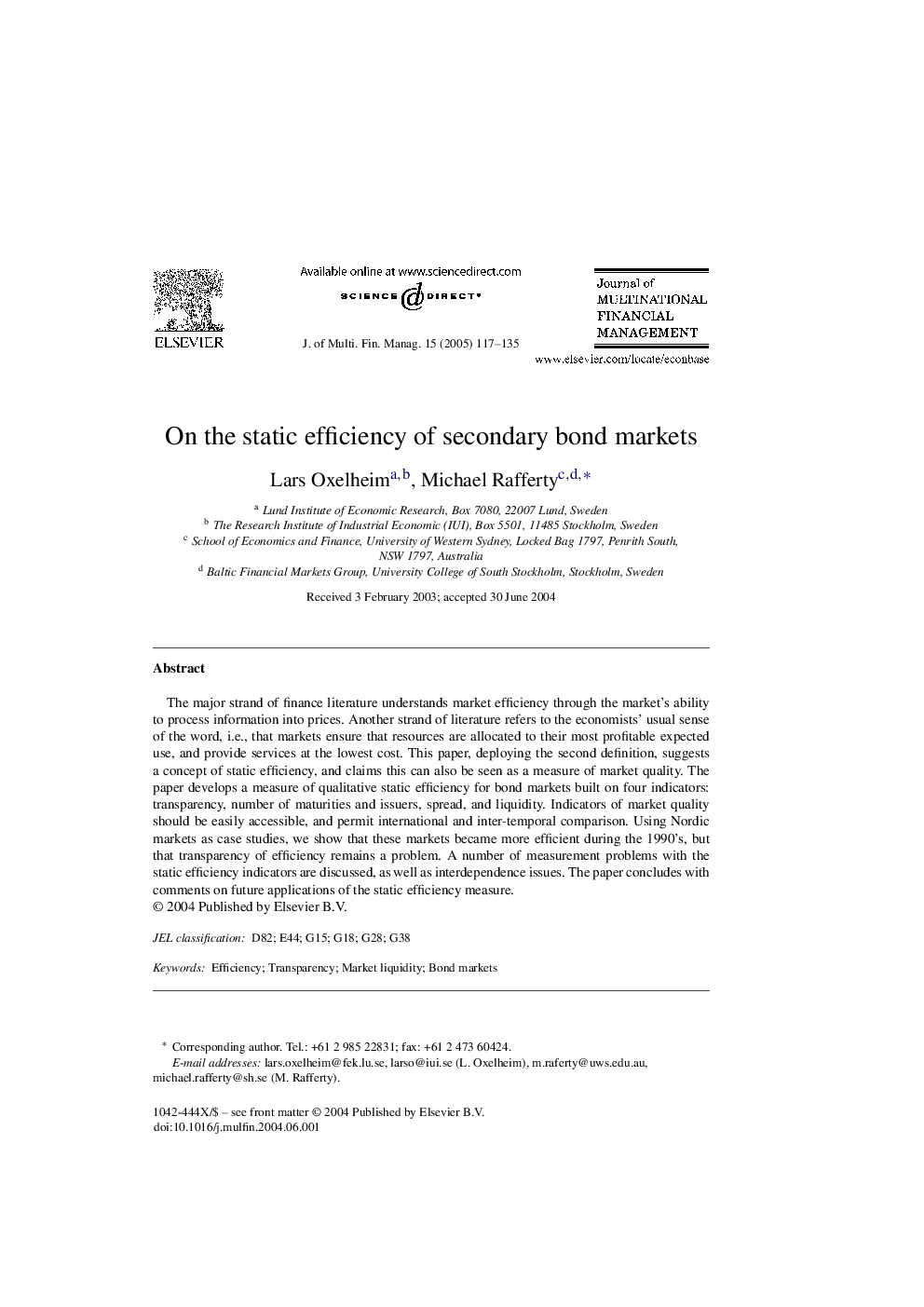| Article ID | Journal | Published Year | Pages | File Type |
|---|---|---|---|---|
| 10478946 | Journal of Multinational Financial Management | 2005 | 19 Pages |
Abstract
The major strand of finance literature understands market efficiency through the market's ability to process information into prices. Another strand of literature refers to the economists' usual sense of the word, i.e., that markets ensure that resources are allocated to their most profitable expected use, and provide services at the lowest cost. This paper, deploying the second definition, suggests a concept of static efficiency, and claims this can also be seen as a measure of market quality. The paper develops a measure of qualitative static efficiency for bond markets built on four indicators: transparency, number of maturities and issuers, spread, and liquidity. Indicators of market quality should be easily accessible, and permit international and inter-temporal comparison. Using Nordic markets as case studies, we show that these markets became more efficient during the 1990's, but that transparency of efficiency remains a problem. A number of measurement problems with the static efficiency indicators are discussed, as well as interdependence issues. The paper concludes with comments on future applications of the static efficiency measure.
Related Topics
Social Sciences and Humanities
Economics, Econometrics and Finance
Economics and Econometrics
Authors
Lars Oxelheim, Michael Rafferty,
